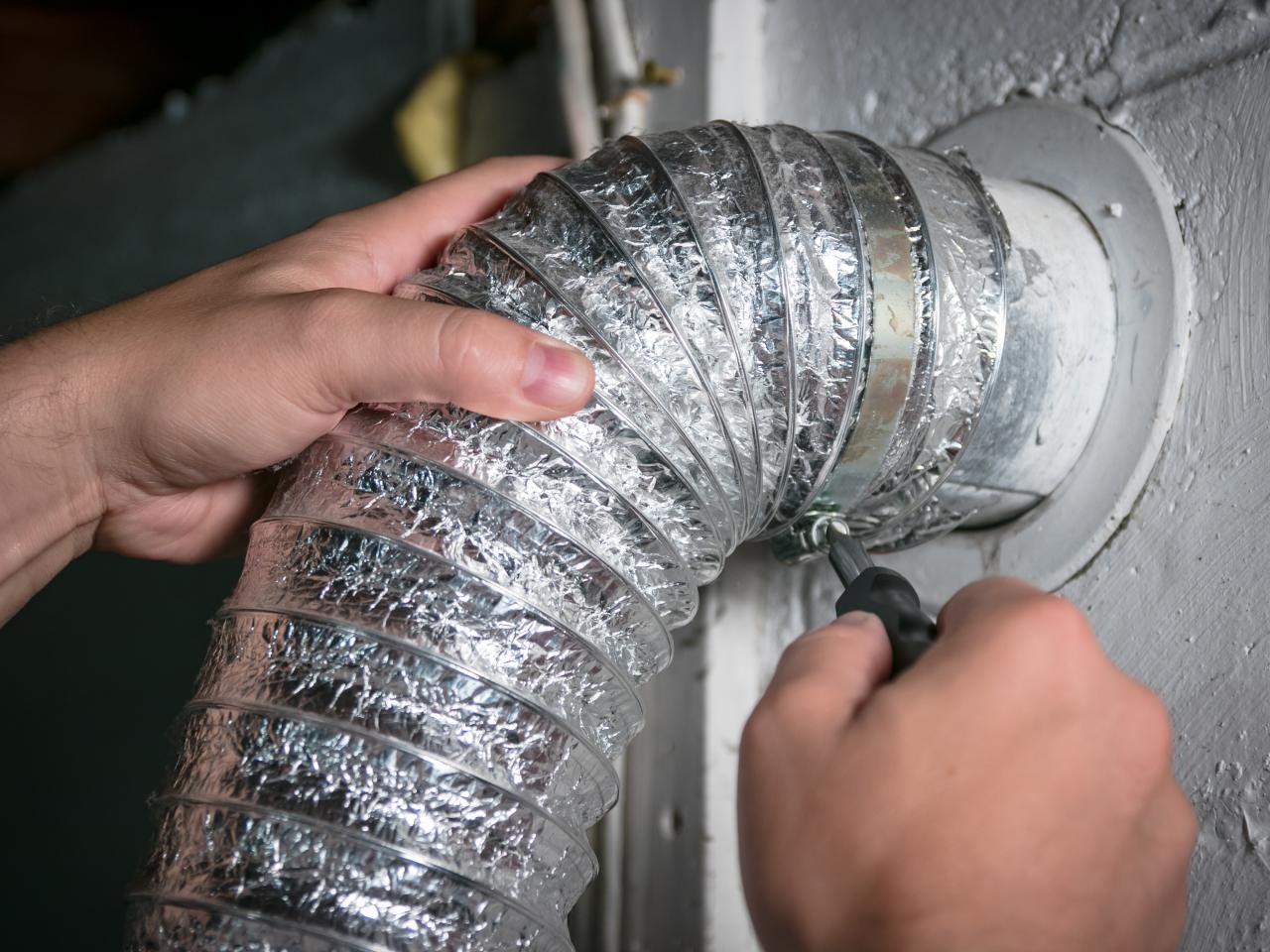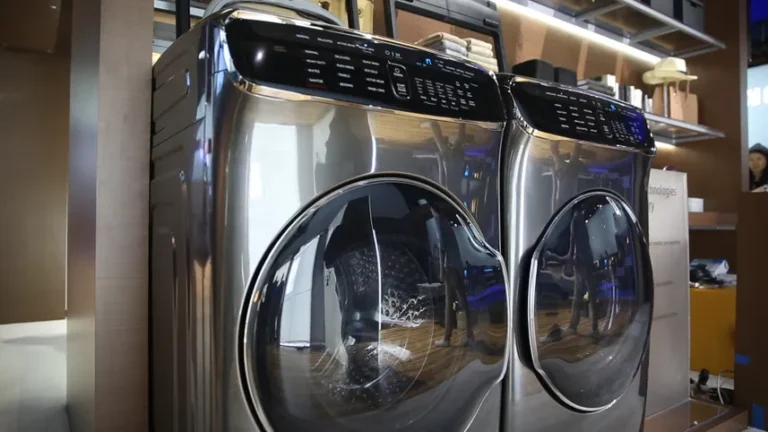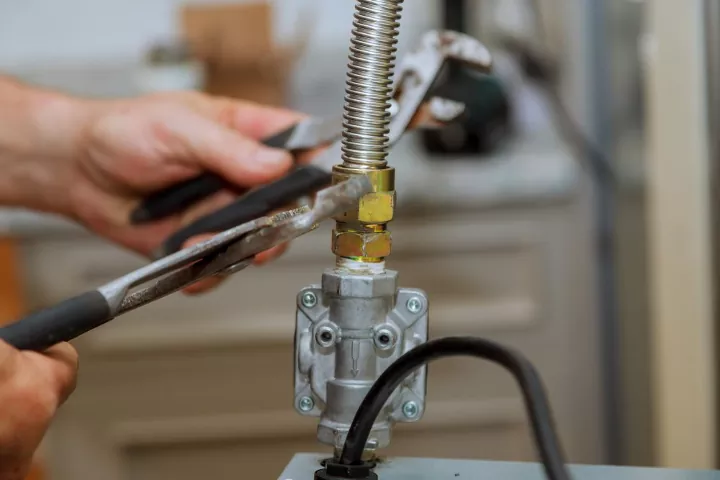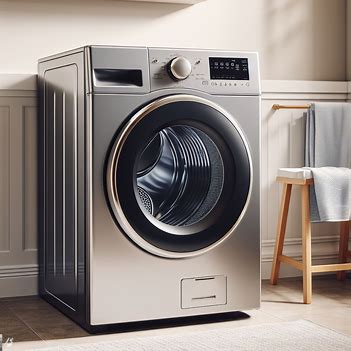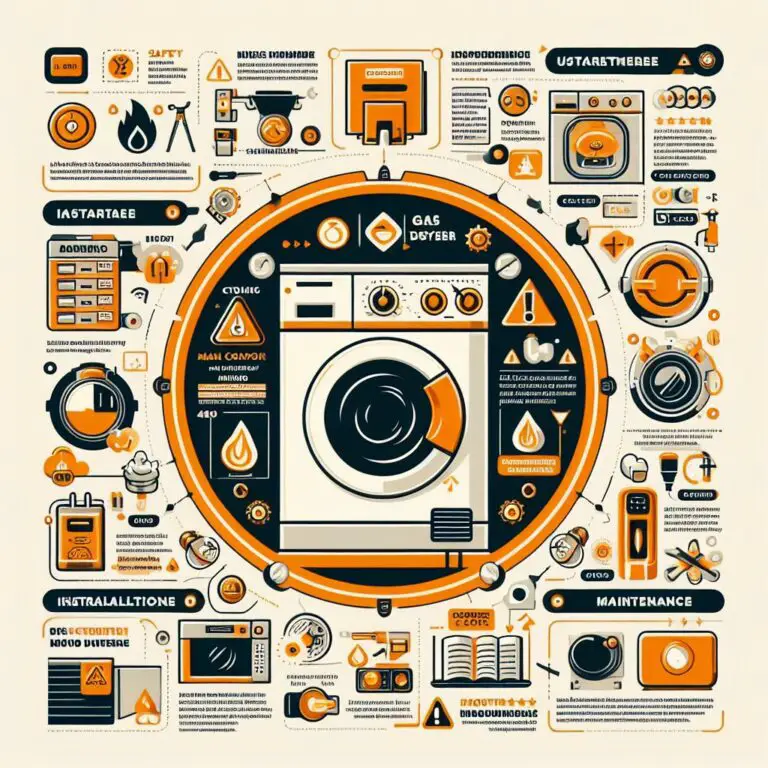do gas dryers need to be vented? Exploring the Importance of Proper Ventilation
Do gas dryers need to be vented? Gas dryers have become a staple in many households due to their energy-efficient and cost-effective nature. However, there is a crucial aspect of gas dryer operation that often goes overlooked – proper ventilation. In this article, we will delve into the importance of venting for gas dryers, addressing common questions, safety concerns, and the impact on efficiency and indoor air quality. Whether you’re a new gas dryer owner or simply curious about the ins and outs of this appliance, we’ve got you covered.
what is the Purpose of the Article?
The primary purpose of this article is to discuss whether gas dryers require venting and why it is essential. We will explore the key differences between gas and electric dryers, the inner workings of gas dryers, and the significance of proper ventilation in ensuring both safety and efficiency.
Key Takeaway: Gas dryers require venting for safety, efficiency, and indoor air quality. Proper venting is essential to prevent hazards like carbon monoxide and maintain efficient drying.
do gas dryers need to be vented?
Yes, gas dryers need to be vented. Venting is a critical requirement for the safe and efficient operation of gas dryers. Gas dryers produce heat through combustion, and this process generates hot combustion gas and moisture. Read about does an electric dryer need a vent guide post.
Gas Dryers vs. Electric Dryers
Gas dryers and electric dryers serve the same purpose – drying your clothes. However, they operate differently, and understanding these distinctions is vital when considering venting.
what is the Key Differences?
- Energy Source: Gas dryers use natural gas or propane, while electric dryers rely on electricity.
- Drying Process: Gas dryers generate heat through combustion, while electric dryers use heating coils.
- Cost and Efficiency: Gas dryers tend to be more energy-efficient, but electric dryers are often cheaper upfront.
| Aspect | Gas Dryers | Electric Dryers |
|---|---|---|
| Energy Source | Natural gas or propane | Electricity |
| Drying Process | Combustion-generated heat | Electric heating coils |
| Cost Efficiency | Typically more energy-efficient | Often lower upfront cost |
| Drying Speed | Faster drying times | Slightly longer drying cycles |
| Utility Costs | Lower energy costs | Higher energy costs |
| Installation | Requires gas line connection | Requires electrical outlet |
| Environmental Impact | Lower carbon emissions | Higher carbon emissions |
| Safety Considerations | Requires proper venting | No combustion byproducts |
| Venting Requirements | Must be vented outside | No need for external venting |
Gas dryers are favored for their faster drying times and lower utility costs. However, this efficiency comes at a potential safety risk if not properly vented.
How Gas Dryers Operate?
To comprehend the need for proper venting, it’s essential to understand the combustion process within gas dryers.
what is The Combustion Process?
Gas dryers burn natural gas or propane to produce hot combustion gas. This gas is then circulated through the dryer drum, where it evaporates moisture from your clothes. The combustion process generates not only heat but also combustion byproducts like carbon monoxide. Read how does a gas dryer work guide, these byproducts must be safely vented to the outdoors to prevent potential health hazards.
what is The Importance of Proper Ventilation?
Ventilation is not just a luxury but a necessity for gas dryers. Here’s why:
- Moisture Removal: Venting eliminates moisture, ensuring your clothes dry thoroughly.
- Safety: Proper venting prevents the buildup of combustion byproducts, reducing the risk of carbon monoxide poisoning.
Can You Run a Gas Dryer Without a Vent?
Running a gas dryer without proper venting is not recommended. The moisture and combustion byproducts need to be expelled from the dryer, which can only be achieved through a vent.
How Do You Vent a Natural Gas Dryer?
Venting a natural gas dryer involves connecting a vent pipe to the dryer’s exhaust port and directing it outdoors. This pipe should be made of metal and designed for gas dryer vent to ensure safety and efficiency.
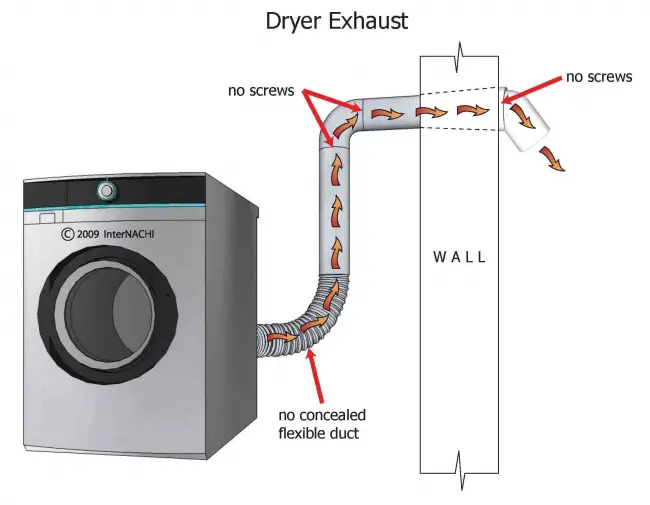
why Venting is for Safety?
Safety should always be a top priority when dealing with gas appliances.
- Carbon Monoxide Risk: Unvented gas dryers can release carbon monoxide, a potentially lethal gas.
- Vent Safeguards: Proper venting systems include safety features to minimize risks.
Are Gas Dryers Vented Outside?
Yes, gas dryers must be vented outside to prevent the release of combustion byproducts, including carbon monoxide, into the home. Venting outdoors is a safety requirement.
Venting for Efficiency
Efficiency is another critical aspect of gas dryer operation that venting affects.
Efficient Airflow
A well-vented dryer ensures optimal airflow, reducing drying times and energy consumption.
Proper venting promotes efficient drying, saving both time and energy costs. When a gas dryer is vented appropriately, it can work at peak efficiency, translating to shorter drying cycles and lower energy bills.
Venting for Indoor Air Quality
Your home’s air quality can be influenced by gas dryer venting.
- Mold and Moisture: Inadequate venting can lead to mold growth and moisture issues indoors.
- Outdoor Venting: Venting outside is essential to maintaining good indoor air quality.
When gas dryers vent outside, they expel moisture and byproducts that could otherwise lead to indoor air quality issues. Mold growth can be a concern in poorly vented areas.
what are Venting Options and Solutions?
There are various venting options for gas dryers, but a few key considerations should guide your choice.
Venting options and solutions for gas dryers provide homeowners with flexibility while ensuring safety and efficiency. Here are some common venting options and solutions:
- Wall Vent: Wall vents are a popular choice for venting gas dryers. They allow you to direct the vent pipe through an exterior wall, expelling moisture and combustion byproducts outdoors. This option is often chosen for its convenience and ease of installation.
- Roof Vent: Roof dryer vents involve running the vent pipe through the roof and installing a roof cap or vent hood. While this option is effective in expelling air and byproducts, it may be more complex to install and may require professional assistance to ensure a proper seal.
- Window Vent: Some homeowners opt for window vent kits that allow you to vent the dryer through a nearby window. These kits consist of a vent hose and a window adapter. While this option provides flexibility, it may not be as efficient as outdoor venting.
- Through Attic or Crawl Space: In some cases, the vent pipe can be directed through the attic or crawl space to an exterior wall or roof vent. This option may require more complex installation and should be compliant with local building codes.
- Periscope Vent: Periscope vents are low-profile venting solutions that work well in tight spaces. They can be adjusted to fit the available clearance and provide a discreet venting option.
- Vent Boxes: Vent boxes or recessed vent boxes are installed within the wall, allowing the dryer to be pushed closer to the wall. These can help save space and maintain a clean, unobtrusive look.
- Indoor Lint Trap: In some situations where outdoor venting is challenging, an indoor lint trap may be used. This device captures lint and moisture, but it does not eliminate the need for proper outdoor venting to expel combustion byproducts.
- Vent Boosters: If your vent run is particularly long or has many bends, a vent booster fan may be used to improve airflow and reduce drying times. This can help maintain efficient drying and reduce energy costs.
When selecting a venting option, consider factors such as the layout of your home, the distance to the exterior wall or roof, and any building code requirements in your area. It’s essential to ensure that the chosen venting solution complies with safety regulations and guidelines to maintain a safe and efficient gas dryer operation. If you are unsure about which venting option is best for your home, consult with a professional or a technician experienced in gas dryer installation what are Venting Regulations and Guidelines?
what are Venting Regulations and Guidelines?
Are there regulations or guidelines regarding gas dryer venting? Let’s explore.
Venting regulations and guidelines for gas dryers are typically established to ensure the safe and efficient operation of these appliances. They vary by region and can be influenced by national, state, or local authorities. While specific regulations and guidelines may differ, some common principles include:
- Outdoor Venting: Gas dryers should be vented directly outdoors, not into attics, crawl spaces, or other indoor areas. Venting outdoors ensures that combustion byproducts, including carbon monoxide, are safely expelled into the open air.
- Vent Material: Vent pipes should be made of appropriate materials, such as metal, and designed for gas dryer venting. This helps prevent the risk of fire and ensures that the vent can withstand the high temperatures produced during the drying process.
- Vent Length and Configuration: Guidelines may specify the maximum length and configuration of vent systems to ensure proper airflow. Longer and more complex venting systems can lead to reduced efficiency and increased safety risks.
- Slope and Support: The vent should be installed with a slight slope to allow condensation to drain outdoors. Adequate support and secure connections are essential to prevent sagging or disconnection over time.
- Vent Termination: Regulations often dictate the appropriate placement and termination of the vent opening outdoors. This may include requirements for a vent cap or hood to prevent rain, debris, or pests from entering the vent.
- Inspections and Maintenance: Regular inspections and maintenance of the venting system are essential to ensure it remains safe and efficient. This can include checking for obstructions, ensuring proper connections, and cleaning the vent as needed.
- Clearances: Regulations may specify minimum clearances between the vent and combustible materials to reduce the risk of fire.
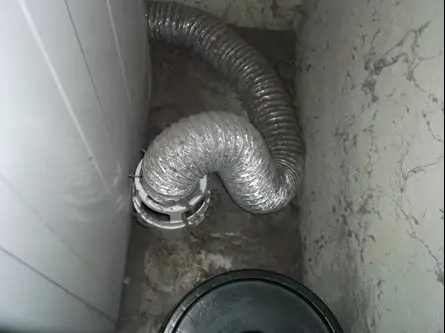
FAQ About do gas dryers need to be vented
Let’s address some common questions related to gas dryer venting:
Can You Run a Gas Dryer Without a Vent?
No, Running a gas dryer without proper venting is not recommended. Gas dryers produce hot combustion gas and generate moisture during the drying process. Without a vent, this moisture and combustion byproducts, including carbon monoxide, have no way to escape, potentially leading to health hazards and reduced efficiency. Check How Hot Does a Dryer Vent Get comprehensive blog.
How Do You Vent a Natural Gas Dryer?
Venting a natural gas dryer involves attaching a vent pipe to the dryer’s exhaust port and directing it outdoors. The vent pipe should be made of metal and specifically designed for gas dryer venting to ensure safety and efficiency. Proper installation and regular maintenance of the venting system are essential to ensure the safe operation of the gas dryer. Read if can gas dryer run on propane or not guide post.
Are Gas Dryers Vented Outside?
Yes, gas dryers must be vented outside. Venting gas dryers indoors is unsafe because it allows combustion byproducts, including carbon monoxide, to accumulate in the living space, posing a severe health risk. Venting outside ensures that these byproducts are safely expelled, maintaining a safe and healthy indoor environment. Check how to vent a dryer without a vent to outside guide.
Is It OK to Vent a Gas Dryer Indoors?
No, Venting a gas dryer indoors is not recommended It can lead to the buildup of combustion byproducts, including carbon monoxide, which is odorless and potentially lethal. Proper venting to the outdoors is essential to maintain safe indoor air quality and protect against health risks associated with gas dryer operation.
Conclusion
Do gas dryers need to be vented, proper venting is not optional when it comes to gas dryers. It is crucial for safety, efficiency, and indoor air quality. Whether you’re a homeowner, a renter, or a future gas dryer owner, understanding the significance of venting is essential. Remember, gas dryers need proper venting for your peace of mind and the well-being of your home.
